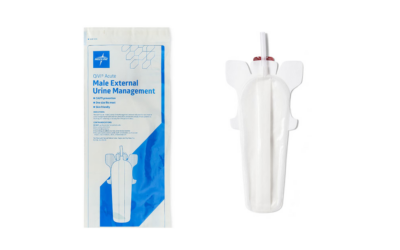By Brandon Huffman, BS, CRCST, CIS
 If there is anything 2020 has shown us, it’s that even the tiniest of life forms can overburden our already fragile health care systems. We work so hard every day to fine tune our practices, reduce surgery turnover times, shorten each patient’s length of stay and reduce staff overtime while improving overall patient outcomes. However, all that great work can be undermined by simple infection prevention shortcomings, especially amidst a global pandemic. In case you weren’t following, I am referring to the COVID-19 global pandemic.
If there is anything 2020 has shown us, it’s that even the tiniest of life forms can overburden our already fragile health care systems. We work so hard every day to fine tune our practices, reduce surgery turnover times, shorten each patient’s length of stay and reduce staff overtime while improving overall patient outcomes. However, all that great work can be undermined by simple infection prevention shortcomings, especially amidst a global pandemic. In case you weren’t following, I am referring to the COVID-19 global pandemic.
As an infection preventionist, I spend a large amount of my time educating staff, patients and even friends and family on breaking the chain of infection. It’s easy to look back at the old chain of infection diagram and maybe you can even quote the six links to target in order to stop transmission, but translating that into work and life can be challenging for many people. Most of the time, we as humans fail to understand how many different surfaces we have touched on our way to the cafeteria, or how many times a day we touch our mouths. This doesn’t even consider the contaminated hand of that person you just shook, how is their germ awareness? I can hear my fellow germophobes chiming in with an “amen.” The fact of the matter is that as a society we have allowed the busyness of everyday life and work to cloud our judgment on infection transmission. If you were to take a survey of hospital workers, it would not be difficult to conclude that the majority envision a hospital as a dirty and prime location to encounter bacteria or viruses. But if you take that same group of people, how would they answer regarding their own home? Or better yet their best friends’ home in which they watched the football game last weekend as they shared chips and dip?
In the operating room and sterile processing departments specifically, these breaks in transmission concepts can be overlooked and put patients and staff at risk. Consider instruments and scopes that cannot be put through a washer disinfector in the sterile processing department. Some manufacturers will provide a validated chemical agent to disinfect the item in order to make it safe to handle for technicians during the assembly and inspection process. Whereas, some manufacturers do not provide an approved method for disinfection at all. In these instances of missing disinfection standards, are your sterile processing technicians wearing gloves to assemble and inspect these items? Is the tabletop surface area used to assemble the instruments being wiped down and disinfected after the assembly process to prevent contamination to others? Let’s talk about the operating room in the middle of a colectomy case. Once the surgeon has performed an anastomosis of the colon, does anyone ask him or her to change their gloves before they inspect the rest of the bowel? Gut bacteria spread inside the abdominal cavity can develop a serious and possibly deadly surgical site infection. Infection prevention is not just a fancy job title ona few of our signature blocks, it is a duty
of all health care workers that we must continually uphold.
Through all the doom and gloom of this global pandemic, I have seen the best in so many people shine through. Our inner human capacity to love and help is still present and flourishing. I am encouraged by all our brave health care workers who show up for our patients every single day in the face of this current adversity. But the greatest “silver lining” I have found as it relates to infection prevention is the giant leap forward
in education about hand hygiene and basic infection transmission principles. Though the accuracy of the information at times isn’t always on point, the general existence of people willing to educate themselves and learn about preventive practices is more than I could ask for. It is my hope that this newfound interest in infection prevention continues as we endure our next flu season. We will get through this pandemic together. Stay consistent and be relentless.
Brandon Huffman, BS, CRCST, CIS, is an infection preventionist and quality and improvement professional for the PeaceHealth Oregon Network.









